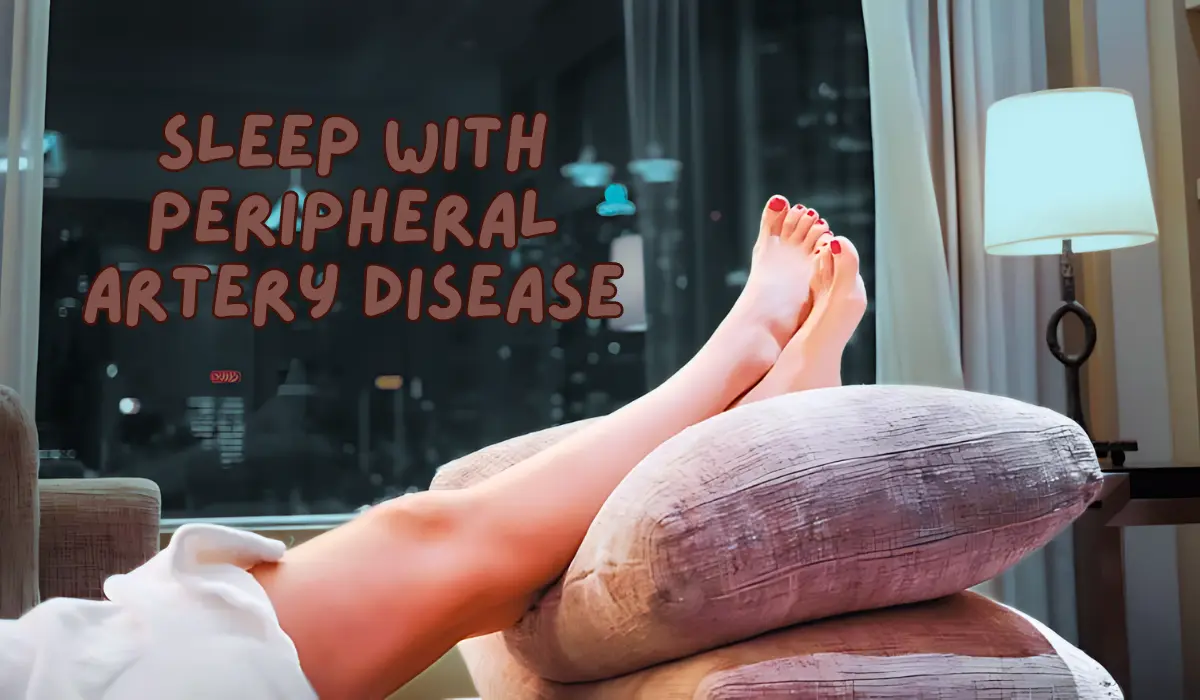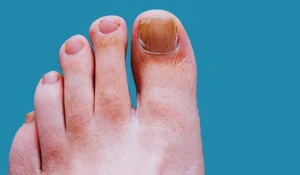If you have peripheral artery disease (PAD), you know how difficult it can be to get a restful night’s sleep. PAD is a circulatory condition where narrowed arteries reduce blood flow to the limbs, usually the legs. This reduced circulation can cause painful symptoms like cramping, numbness, or a burning sensation in the legs and feet – especially when lying down at night.
The good news is that finding the right sleeping position can go a long way in improving circulation and minimizing PAD symptoms so you can sleep better. Here’s what you need to know.
Understanding Peripheral Artery Disease
PAD happens when plaque buildup narrows the arteries carrying blood to your legs and arms. This restricts the amount of oxygen-rich blood able to reach those areas, causing pain and other unpleasant sensations.

“Poor circulation from PAD can really disrupt sleep quality for patients,” explains Dr. Emily Skolnik, a vascular surgeon in California. “The uncomfortable symptoms tend to be worse at night when gravity is no longer helping blood flow to the legs and feet.”
Not getting enough restful sleep can take a toll on overall health and worsen PAD over time. That’s why finding ways to improve circulation and reduce symptoms at night is so important.
How Sleeping Positions Affect Circulation
The position you sleep in has a big impact on blood flow throughout the body. Some positions promote better circulation to the legs and feet by utilizing gravity or taking pressure off certain blood vessels. Other positions can restrict circulation even further.
Best Sleeping Positions For PAD
Certain sleeping positions are better than others when it comes to relieving PAD symptoms and getting quality rest:
Back Sleeping
Sleeping flat on your back keeps the legs and feet elevated slightly, allowing blood to flow with the assistance of gravity. This can reduce painful cramping, numbness, and restlessness in the legs at night. Adding a pillow underneath the knees takes the pressure off the lower back too.
Side Sleeping
Side sleeping is a good option as it allows for proper spinal alignment and reduces pressure on the blood vessels running behind the legs. Be sure to switch sides periodically to equalize circulation. Placing a pillow between the knees can provide extra support.
Elevating the Legs
If back or side sleeping isn’t comfortable, try elevating the feet and legs above the level of the heart. This promotes circulation by allowing blood to flow downwards more easily. Use foam wedges or stackable pillows to prop up the legs.
“I recommend my PAD patients first try sleeping on their backs with legs elevated if possible, Side sleeping with a pillow between the knees is another good fallback position,” advises Dr. Skolnik.
Supportive Sleeping Accessories
Certain pillows, mattresses, and other accessories can also help maximize circulation and reduce PAD symptoms at night:
Pillows
In addition to pillows for leg elevation or spinal alignment, knee pillows or body pillows can provide helpful support when side sleeping. Look for pillows that relieve pressure points and improve circulation.
Mattress
The right mattress is key for maintaining proper sleeping positions all night. A medium-firm mattress that supports spinal alignment yet allows the shoulders and hips to sink in slightly is ideal for PAD. Adjustable beds allow you to elevate the legs easily.
Other Helpful Tips For Better Sleep
Along with focusing on sleep positioning, some lifestyle adjustments can also improve PAD symptoms and sleep quality:
Exercise
Low-impact exercises like walking help improve circulation and reduce PAD Pain. Aim for 30-60 minutes per day but avoid exercise right before bedtime.
Dietary Changes
A heart-healthy diet focused on fruits, veggies, whole grains, and lean protein can help manage PAD symptoms long-term. Limit sodium, saturated fats, and fried foods.
Smoking Cessation
Quitting smoking is crucial for vascular health and managing PAD. Smoking worsens circulation issues.
“Beyond sleep positioning, staying active through exercise and following a nutritious diet are both so important for PAD management and overall wellness,” notes Dr. Skolnik. “I really emphasize lifestyle changes along with proper sleep habits.”
Expert Opinion
The Bottom Line
If you have peripheral artery disease, finding the optimal sleeping position can lead to better rest and less disruptive symptoms. Focus on sleeping in a way that promotes circulation like back sleeping with legs elevated or side sleeping with pillow support.
An accommodating mattress and certain accessories can help as well. With some experimentation, you can find the right solution to minimize PAD-related sleep disturbances and wake up feeling your best.







